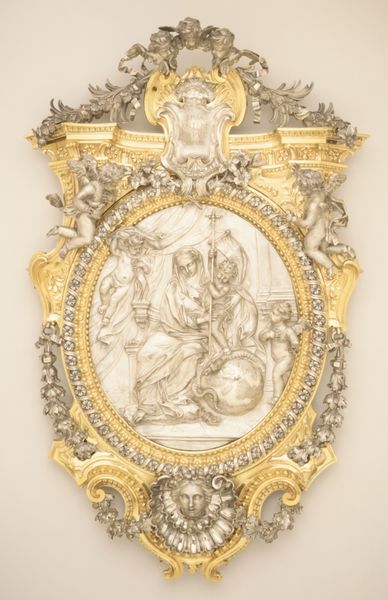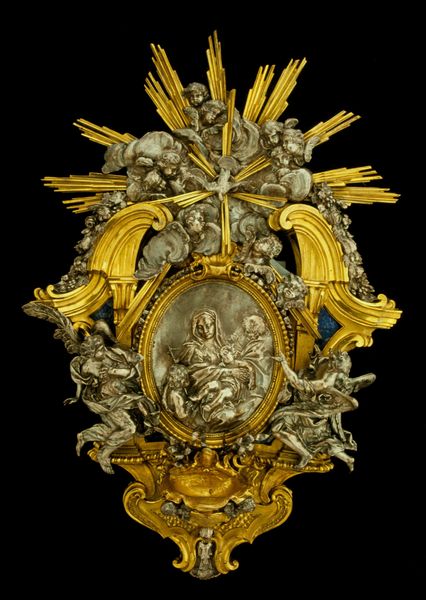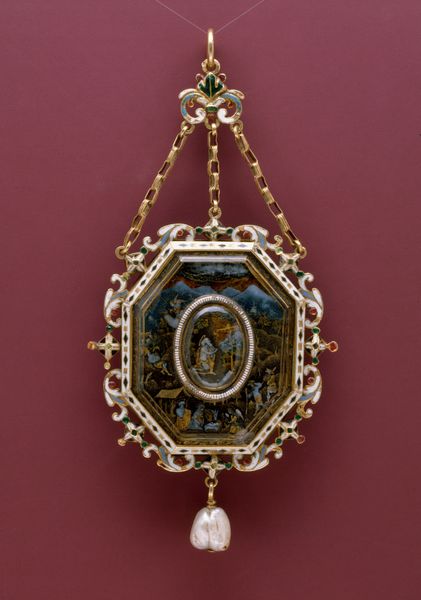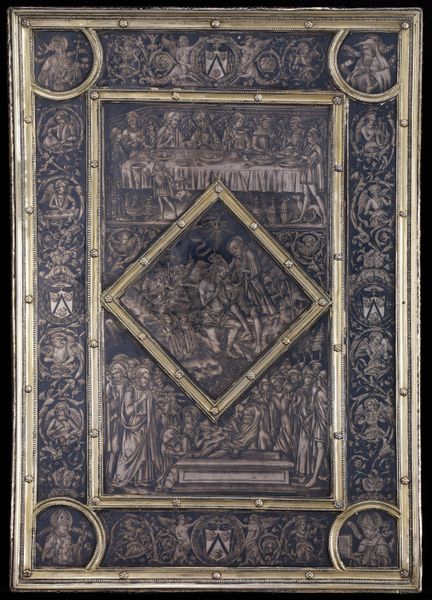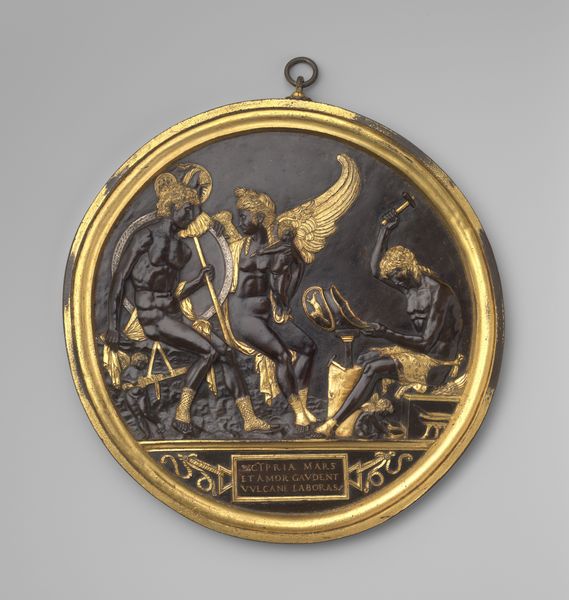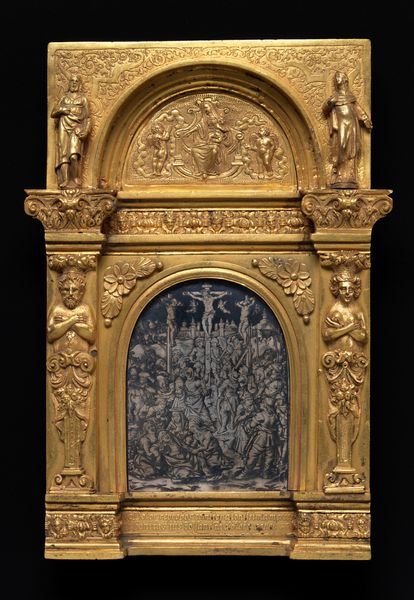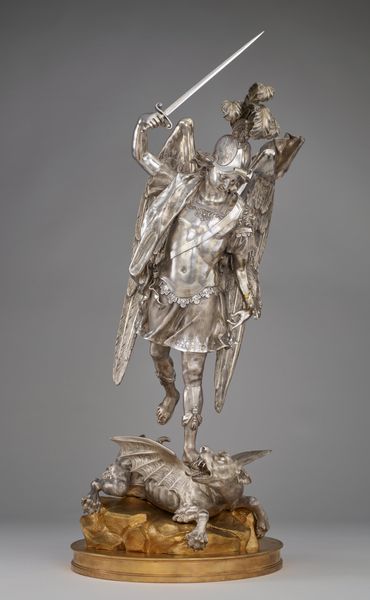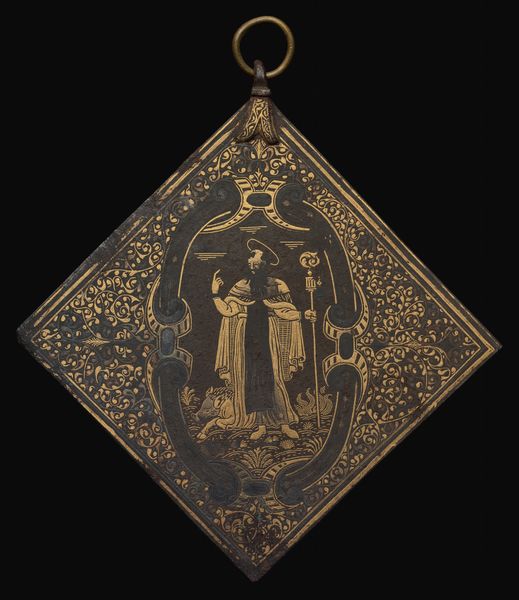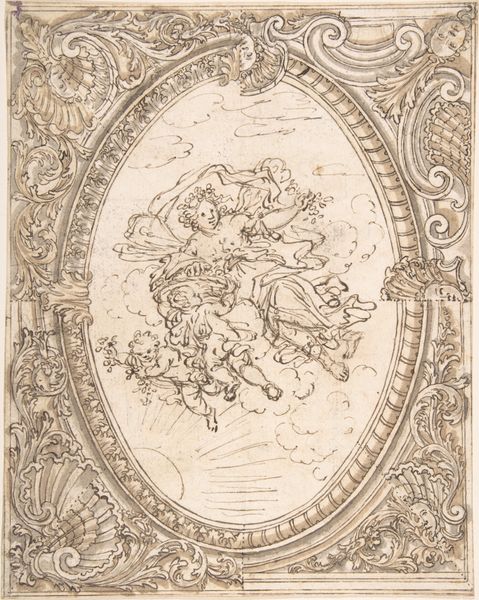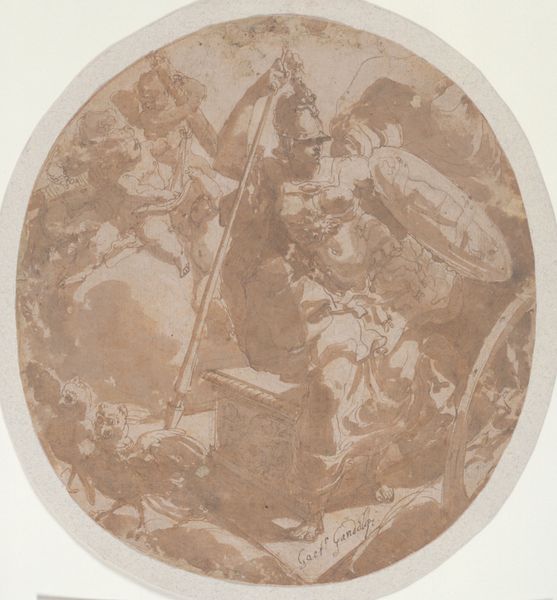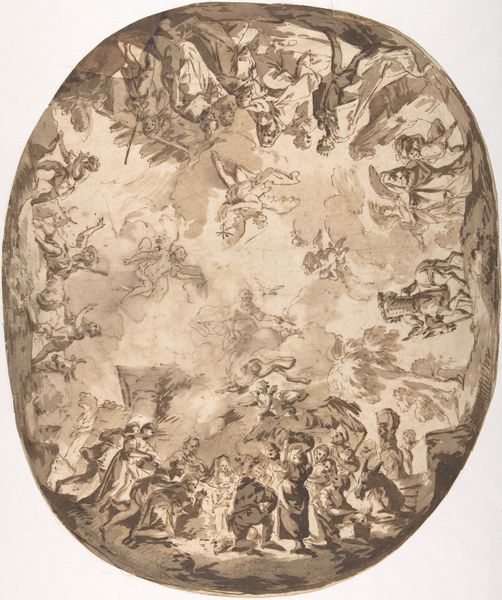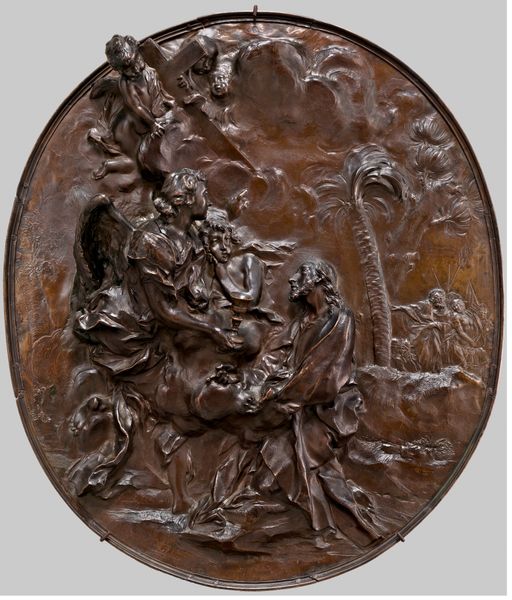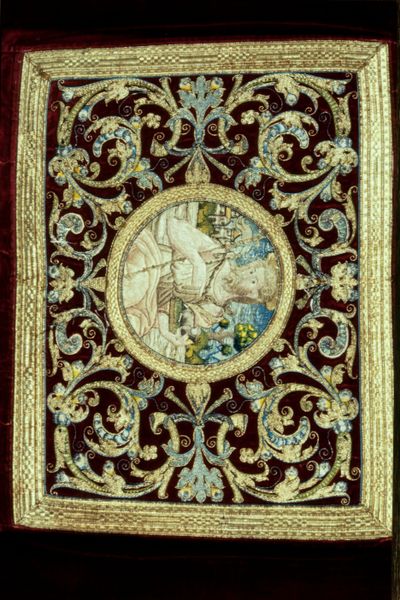
Dimensions: Diam.: 43.8 cm (17 1/4 in.); frame: 54.6 × 54.6 cm (21 1/2 × 21 1/2 in. )
Copyright: Public Domain
Curator: What a fascinating piece. We’re looking at Luigi Valadier's "Crucifixion of Saint Peter," a silver relief from around 1770-1780, now residing here at the Art Institute of Chicago. Editor: It's immediately striking—a flurry of silvery figures set against a deep backdrop, a scene wrought with what looks like both chaos and solemnity. There's a certain intensity to the composition that makes my eye dart around. Curator: The scene depicts, of course, Saint Peter's crucifixion, a story heavy with symbolic weight. He chose to be crucified upside down, feeling unworthy to die in the same manner as Christ. This sculpture is full of reversed or inverted symbology and meaning. Editor: Exactly. Inversion is itself a signifier, in this case one of profound humility and defiance. Placing Peter's death in that context is potent. And look at the laborers depicted— their bodies are so intricately defined yet strangely suspended in motion. This feels like an intentional moment, focusing on the agency of those performing the crucifixion. The use of the ladder also adds weight. Curator: It also embodies the artistic and theological values of the Baroque period. Observe the dynamic composition, full of movement and emotion, carefully crafted with the figures arranged dramatically within the circular space, all pointing to themes of sacrifice. It has that almost operatic feel to it. Editor: Absolutely, I think Baroque art's intent often becomes wrapped in layers of privilege and power. Does this not concern you with its heavy embellishments as part of that conversation, too? Curator: Perhaps, yet I feel there's a way this embellishment adds meaning here. The ornate frame, the material richness of the silver… aren’t they amplifying the importance of this event for the culture which birthed the artwork? Editor: It can read as reverence or, on the other hand, like glorification and even sanitization, as some contemporary audiences perceive certain religious subjects, and their related power structures, especially those centered in suffering. Curator: That's fair. It does raise important questions. Perhaps we see mirrored here both piety and the complex relationship between power, religion, and artistry. Editor: Exactly, an artwork demanding an examination, and really even a deconstruction, of all the potential symbols involved in power and agency. I hadn’t expected to consider so many critical and sensitive concerns through one shiny little relief. Curator: Yes, it speaks volumes through skillful craftsmanship. The "Crucifixion of Saint Peter," both reflecting its time and sparking timeless questions.
Comments
No comments
Be the first to comment and join the conversation on the ultimate creative platform.
